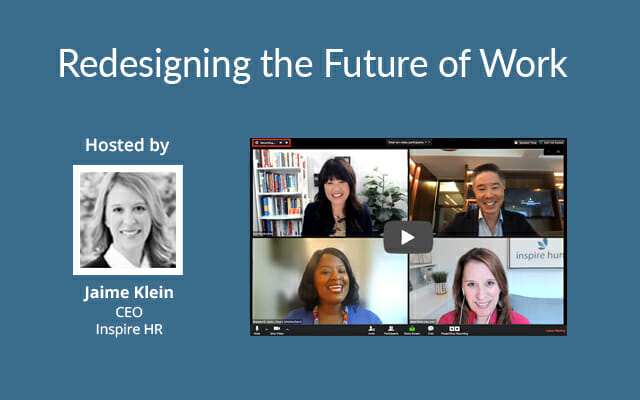
How DEIB Leaders Can Harness the Science Behind Unconscious Bias
APR 27, 2021
Unconscious biases, snap judgements, assumptions… no matter what you call them, the natural human “search for sameness” is a key insight we have to acknowledge to advance diversity, equity, inclusion + belonging (DEIB).
The term “bias” carries a negative connotation, but it actually has a scientific explanation. We are overwhelmed by 11 million pieces of information every second but can only process 40, so our brain takes a shortcut and categorizes the information, which results in assumptions and snap judgements. Without categorization on some level, we’d be overwhelmed by something as simple as brushing our teeth.
This doesn’t mean DEIB initiatives are bound to fail, though. On the contrary. With the right approach, business and HR leaders can harness these insights to build structures and frame their systems in a way that will reinforce inclusion and belonging at every phase of the employee experience—from recruiting to offboarding. With the appropriate leadership we can comfortably evolve from DEI to DEIB
Social scientists point out that employees who work in diverse groups are less comfortable. It’s not surprising, considering scientists have used MRI’s to show that a person’s brain responds differently when shown images of people from their own race, than when viewing images of people from various races. Working with a homogenous team often feels easier for people, but outcomes suffer from groupthink and lack of innovation.
However, simply creating diverse teams isn’t the answer. As Harvard Business Review explains, the key to maximizing team performance involves actively encouraging members to try to take on the perspectives of their teammates. It comes down to celebrating multiculturalism to create a true sense of belonging.
This science behind human behavior is a powerful guide for companies at any stage of their diversity, equity, inclusion + belonging journey. At Inspire, we weave this knowledge into elevating companies’ DEIB strategy in any or all of the following three stages:
Assessing and aligning leaders around DEIB
Aiming for a real sense of belonging for all employees starts with assessing where the company is today. The first step is to gauge how your leaders view DEIB. Through honest conversations, listening circles, and one-on-ones, determine why each individual sees DEIB as a priority—or why not.

In our recent session of Redesigning the Future of Work, Wei-Li Chong, U.S. President of Mind Gym pointed out how polarized our society is today, and how this naturally extends to our workforces. “Whatever you do, it’s going to create a group of people that say ‘we’ve gone too far’ and it’s going to create a group of people that say ‘we’re not doing enough.’” Companies have to acknowledge this as their starting point in gaining alignment from the top down.
There needs to be a common understanding and commitment to why this work is essential—not just for the sake of business, but for the sake of being a better human being. After all, according to coaching and leadership platform BetterUp, employees who report to an inclusive leader are 2.5 times more likely to feel a sense of belonging at an organization—the outcome we’re all working toward.
Leaning into the science behind human behavior can provide a non-judgmental starting point at the leadership level, with teams, and among focus groups. Consider applying behavior science proof points at each of these assessment stages:
- Assessing how the organizational culture aligns with business objectives and the wider market
- Identifying goals and metrics
- Reviewing and analyzing qualitative and quantitative employee feedback and reviews
- Celebrating DEIB accomplishments to date
Implementing DEIB
Behavior science and data also play an important role in engaging employees around the “why” for DEIB. When we acknowledge that people are more comfortable working among others who look and behave like them, we cannot expect a shift in behavior to just happen on its own. It is critical to engage employees in various ways and lead by teaching the company-wide and individual benefits of DEIB—including gaining new perspectives, attracting top talent, and powering innovation.
Some of the most successful tactics we see in engaging employees include:
- Create a diversity task force of people from multiple levels of the organization with varying lived experiences. The role of the task force is to hold leaders accountable to their DEIB initiatives and commitments. It is important to ensure the diversity task force is not a volunteer body that disproportionately burdens BIPOC employees. We suggest a stipend, increase in pay, or similar compensation so your employees most impacted by inequality are not further discriminated against by volunteering their time to solve the problem.
- Implement comprehensive DEIB learning programs. Education is a fundamental component of successful DEIB initiatives due to the very nature of unconscious biases. Each of us brings unconscious biases through a personal lens, compounded by the organizational lens, and the only way to work around these is to first become aware of them. A combination of individual coaching, all-hands training, and team-based learning programs can provide safe spaces for employees and leaders to learn and grow together.
- Establish employee resource groups (ERGs). ERGs provide a safe space for employees to share their ongoing experiences with microaggressions, to champion professional development and mentorship, and to provide critical feedback to senior leaders. We strongly recommend each ERG has a senior-level sponsor to ensure effective communication to the C-Suite.
Measuring DEIB
As a firm believer in what gets measured gets done, we weave metrics into all of our work. And while it may seem tricky to evaluate behavior change, it’s crucial to determine the tools, metrics, and milestones needed to track progress and continue moving forward or change course when needed.
During “Using Behavioral Insights to Strengthen DEIB,” panelists Yon Na, Shaunna D. Jones, and Wei-Li Chong each expressed how they see employee engagement surveys as powerful tools to measure progress. When conducted effectively, these surveys will gauge how people in the organization feel along a spectrum of belonging, the value given to their uniqueness, how empowered they feel to perform their best work, and more.

Other useful metrics, in addition to diverse representation at all levels, include: measuring paths to career advancement for direct reports and team members, 360 leadership reviews, distribution of hours to include inclusive activities like ERG engagement and mentorship, and many more.
Talking about the science behind human behavior and how it affects diversity, equity, inclusion + belonging may sound too academic to be practical. But, why we think the way we do is as practical as it gets. Coming together around this basic human understanding provides a powerful foundation to build alignment among leaders, as well as engagement with employees, to make a lasting change.